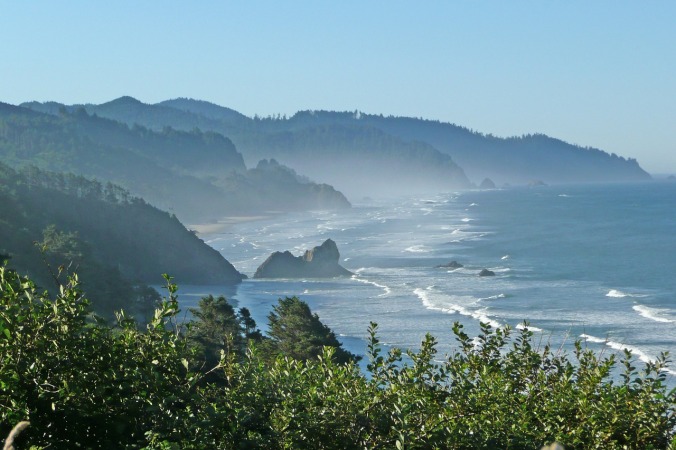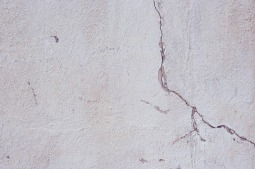 I recently stumbled upon a dooms day blog post that addresses the imminent risk of a large-scale earthquake & tsunami within the Cascadia subduction zone region. In fact, this post recently received some coverage on Portland’s KGW.
I recently stumbled upon a dooms day blog post that addresses the imminent risk of a large-scale earthquake & tsunami within the Cascadia subduction zone region. In fact, this post recently received some coverage on Portland’s KGW.
I absolutely agree there is an imminent risk of a significant earthquake & tsunami – but that’s about all I agree with in the blog post.
Part of the post indicates that this blogger is predicting a wall of water that will annihilate everything west of I-5 attributing this statement to a FEMA representative printed in a recent magazine article.
The original FEMA quote printed in The New Yorker, July 20, 2015 by Kathryn Schulz: “Kenneth Murphy, who directs FEMA’s Region X, the division responsible for Oregon, Washington, Idaho, and Alaska, says, “Our operating assumption is that everything west of Interstate 5 will be toast.” The New Yorker, July 20, 2015 (http://bit.ly/1Sj4Noz)
Aside from their claims, in my opinion they are taking a quote from a FEMA representative out of context and failing to include Kathryn Schulz’s (the author of the original The New Yorker article) follow-up clarifying what the FEMA person quoted in her original article really meant by his statement.
Here’s Kathryn Schulz follow-up in a response printed in The New Yorker two weeks later: “…“toast” is not what you would call a precise description, so let me be more specific. What Murphy did not mean is that everyone west of I-5 will be injured or killed; FEMA’s casualty figures, while horrifying, amount to under one-half of one per cent of the population of the region.” The New Yorker, July 28, 2015 (http://bit.ly/1GZjwhU)
I agree that west of I-5 will be severely affected; however, it’s unfair and inaccurate to say everything west of I-5 will be gone. But this blog won’t stop beating its drum with that hyperbolic quote that was obviously taken out of context.
The news station continued to look into the blogger’s recent allegations about a buoy showing signs of distress alleging it’s a predictor of severe seismic activity and the station refuted their data points with experts in the field countering the blogger’s claims. (KGW: http://www.kgw.com/news/local/geologist-debunks-nw-earthquake-article/18328115)
The end. Or so we thought.
I got half way through another Cascadia earthquake blog post before I had to stop reading. It made me mad. I feel that what they are doing is essentially running into a crowded theater and screaming “FIRE!!!!” They repeated several times that they are not trying to incite fear… but in my opinion… I think they are.
Yes, we are overdue for a possible 9.0. Rather than being Chicken Little posting about a buoy dropping up and down (which who knows if it’s even a relevant data point and or a predictor… I will leave that to actual experts) let’s talk about how to prepare for the catastrophic event instead. Such as getting one gallon of water per person per day for up two weeks and for some areas along the coastline even longer, plus don’t forget about food & water for your pets. Or, knowing how to shut off your natural gas connected to your home. Or, speak with your schools so you know how they are preparing for an earthquake….Instead of carrying on about an alleged 50 foot wall of water that will reach I-5!

This fear-mongering wall of water that scales past the Cascade Range really doesn’t compute. I am wondering how often he or she has driven Highways 42, 38, and 126 (I know I have driven those roads hundreds if not a thousand or more times in my lifetime traveling back and forth from I-5 to the coast) – the topography of the hills protecting I-5 is impressive more so than anything close to a shoreline that would be vulnerable to severe waves.
I also want to know if this blogger watched the videos of the tsunami hitting Japan or the deadly tsunami that devastated many countries throughout the Indian Ocean. Many waves were large and powerful beyond measure and it cost many lives… but it wasn’t in biblical proportions scaling mountains and large hills – the waves still had to contend with the topography in its path. Even Chile had a 9.0 earthquake… still no colossal wall of water encroaching on their even grander mountain range.
Quote from CREW Cascadia Subduction Scenario 2013: “The height of the wave and how far inland it travels will vary with location: In places along Cascadia’s coast, the tsunami may be as high as 30–40 feet (9–12 m). Much depends on the local topography—the lay of the land—both underwater and along the shore. In general, the inundation will be greater where the land is low or the topography focuses the waves, such as at bays and river mouths. Other key factors are subsidence and tides: When the fault ruptures, the land in many coastal areas will drop in elevation, increasing the run-up of the subsequent tsunami; and if the quake occurs during high tide, the tsunami will travel farther inland than it would at low tide.”
http://crew.org/sites/default/files/cascadia_subduction_scenario_2013.pdf
My personal opinion, this blogger has watched Deep Impact too many times with Tea Leoni and Morgan Freeman and didn’t pick up the reports AFTER The New Yorker came out to understand how statements were clarified about FEMA (in all likelihood, this will cue the conspiracy theorists).
All I can say is plan and prepare for an earthquake. But please do not panic after reading unsubstantiated dooms day scenarios.
Instead read reports from FEMA, CREW, geologists (Oregon State University has produced some nice content) and other government agencies who hire experts in this field.
Please note: I often use Coos Bay in my examples since I am from there and my family has lived there for several generations (and still does). I know the land and I care about the area and its people.
Tsunami Videos:
A compelling video from the tsunami that hit Thailand. The video shows the calm before the waves approach (go to 56 seconds in to see early signs of the tsunami). Warning the video is graphic as you see people being swept away by the waves.
https://www.youtube.com/watch?v=PW39qbfamFY
A video from the 2011 Japanese Tsunami with footage taken from a helicopter recording the devastation sweeping across the land.
https://www.youtube.com/watch?v=3xKMFzKOIfQ
Another video from the 2011 Japanese earthquake. Around 5:50 minutes you can see a large wave sadly take down a two story building that was close to the shoreline.
https://www.youtube.com/watch?v=IAa8BmuPqh8
A video taken from a roof top as tsunami waves head at them from the shore.
https://www.youtube.com/watch?v=V2taJExhV6g
 and their role in getting communities back on their feet after a natural disaster.
and their role in getting communities back on their feet after a natural disaster. I recently stumbled upon a dooms day blog post that addresses the imminent risk of a large-scale earthquake & tsunami within the Cascadia subduction zone region. In fact, this post recently received some coverage on Portland’s KGW.
I recently stumbled upon a dooms day blog post that addresses the imminent risk of a large-scale earthquake & tsunami within the Cascadia subduction zone region. In fact, this post recently received some coverage on Portland’s KGW.




